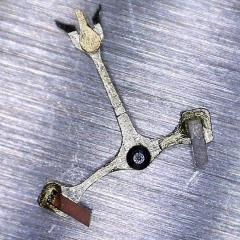Identifying lathe collet sizes.
-
Recently Browsing
- No registered users viewing this page.
-
Topics
-
Posts
-
By HectorLooi · Posted
Usually the coiled spring contacts the piezo sounder and the finger spring is the ground. -
So I checked with my friendly local lab supplier and they can supply the following in 2.5 lt bottles: Tetrachloroethylene (B-Dip) - approx £65 Trichloroethylene (one-dip) - approx £43 n-Heptane 99% (Essence of Renata) - approx £35 Hexane - approx £45 I can't import or buy locally the 'real' products, hence the raw chemicals above. What do you think would be my best option? I'm edging towards Trichloroethylene - I know there are greater health risks, but given the very small quantities used for each treatment and 99.99% of the time it will be sealed in a jar, I think any risk is vanishingly small? This is mainly due to its assumed superior cleaning properties, or from the experience of this group, is the extra cleaning noticeable compared to its safer alternatives?
-
Unfortunately after much investigation, apparently the coil has been discontinued! Shall I get my service guy to try the solder or the conductive paint? 🎨 Final recommendation please🙏
-
Here are the pics of the bridge. Looks correct, but as soon as I screw on the rotor, the watch stops. Video here: https://1drv.ms/v/s!ArG5E62RGctxjokY5ws85BzuJLVakA Pics. Might have figured it out. I have been working on this watch for a while and since I got it as a non runner in a terrible shape, there was no guarantee that parts were proper. I think the main screw that was used on the rotor was too long, so it was stopping the main train. As soon as I fished out a much shorter and larger headed screw, things were good again. Please celebrate with me.
-
By KarlvonKoln · Posted
One-dip or naphtha should be safe, but are you sure it isn't magnetized? I would also check that. Although, if that balance is from an Elgin 760 0r 761, I would think it would have a hairspring of non-magnetic alloy.
-










Recommended Posts
Join the conversation
You can post now and register later. If you have an account, sign in now to post with your account.
Note: Your post will require moderator approval before it will be visible.